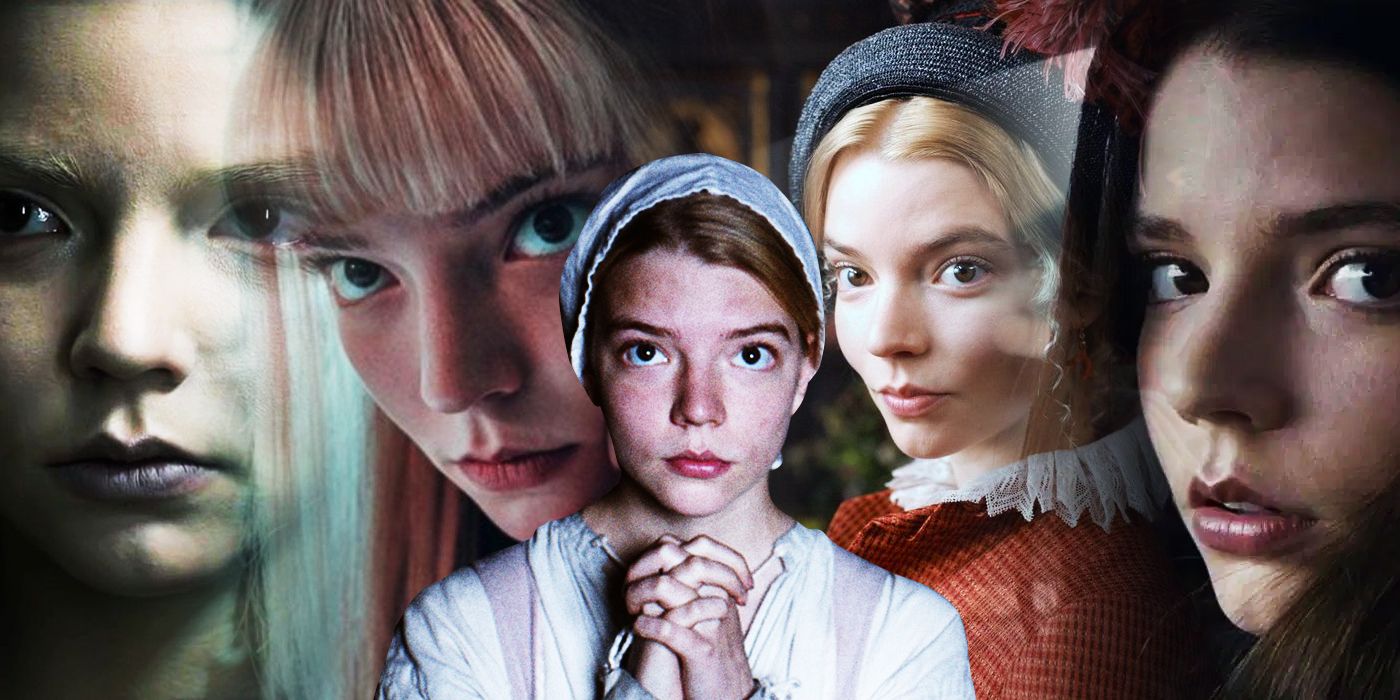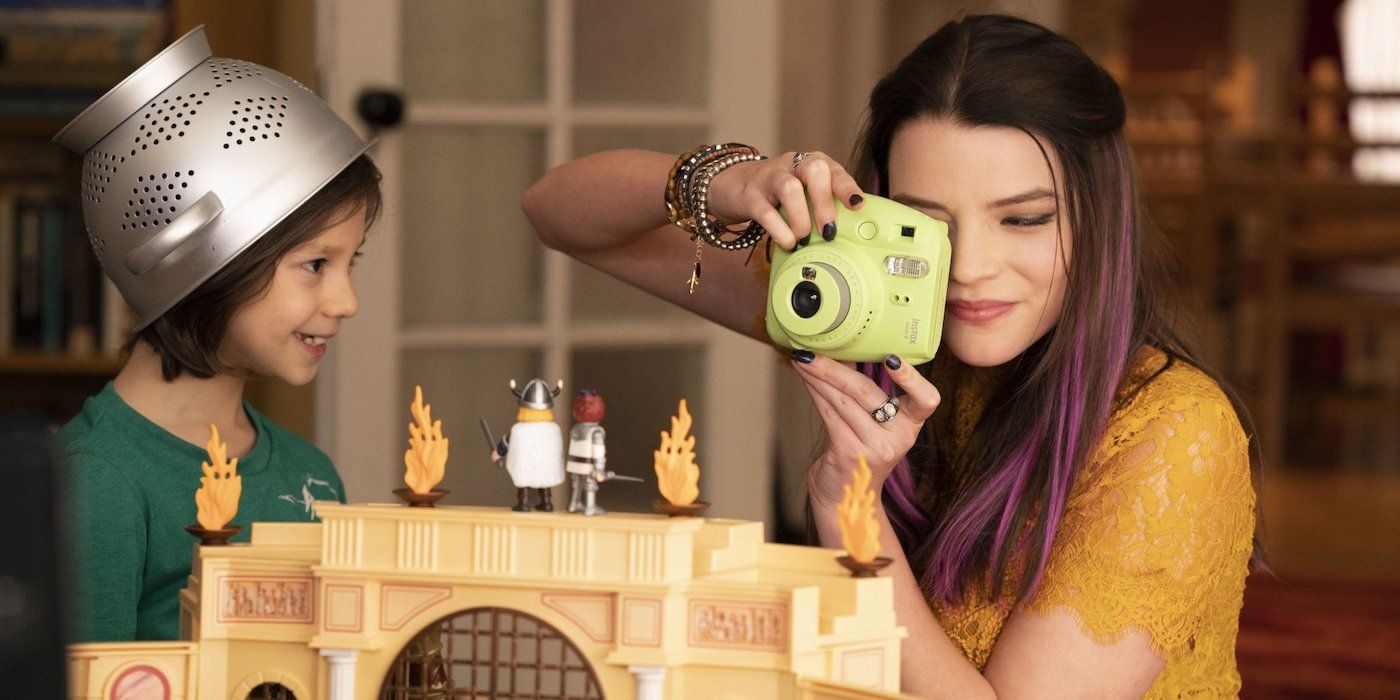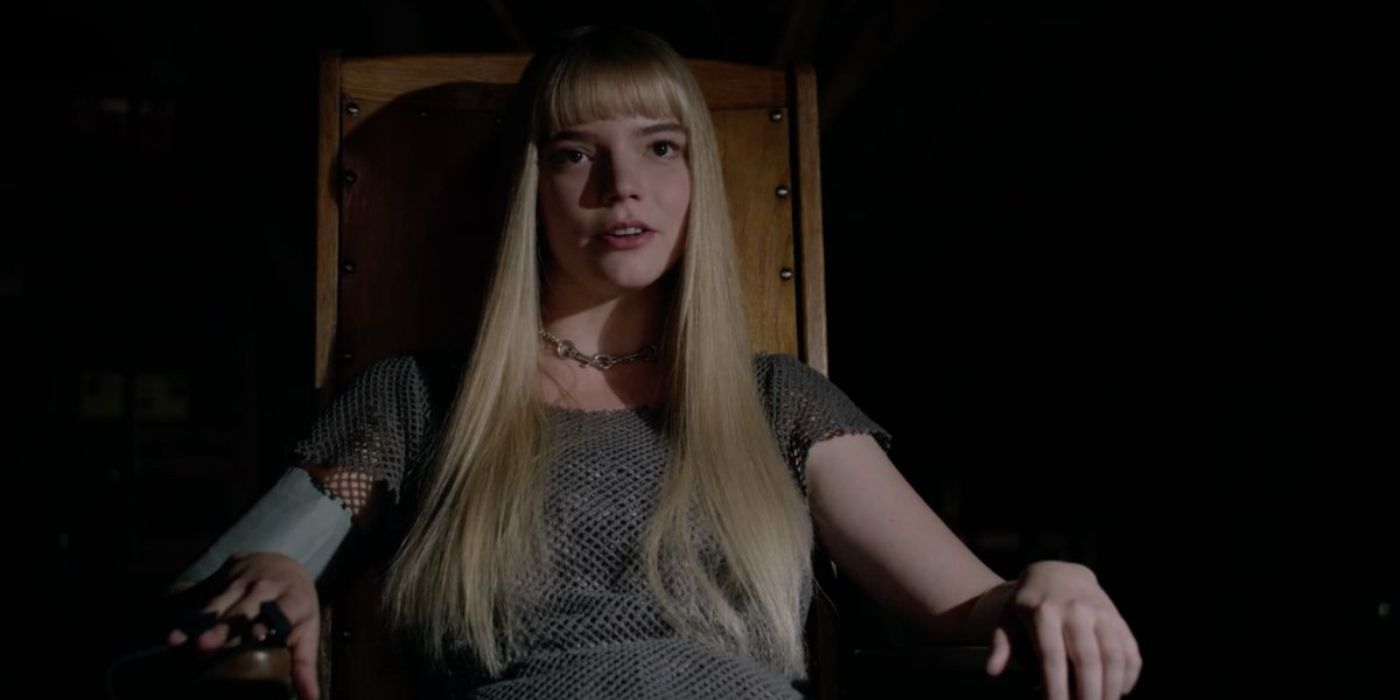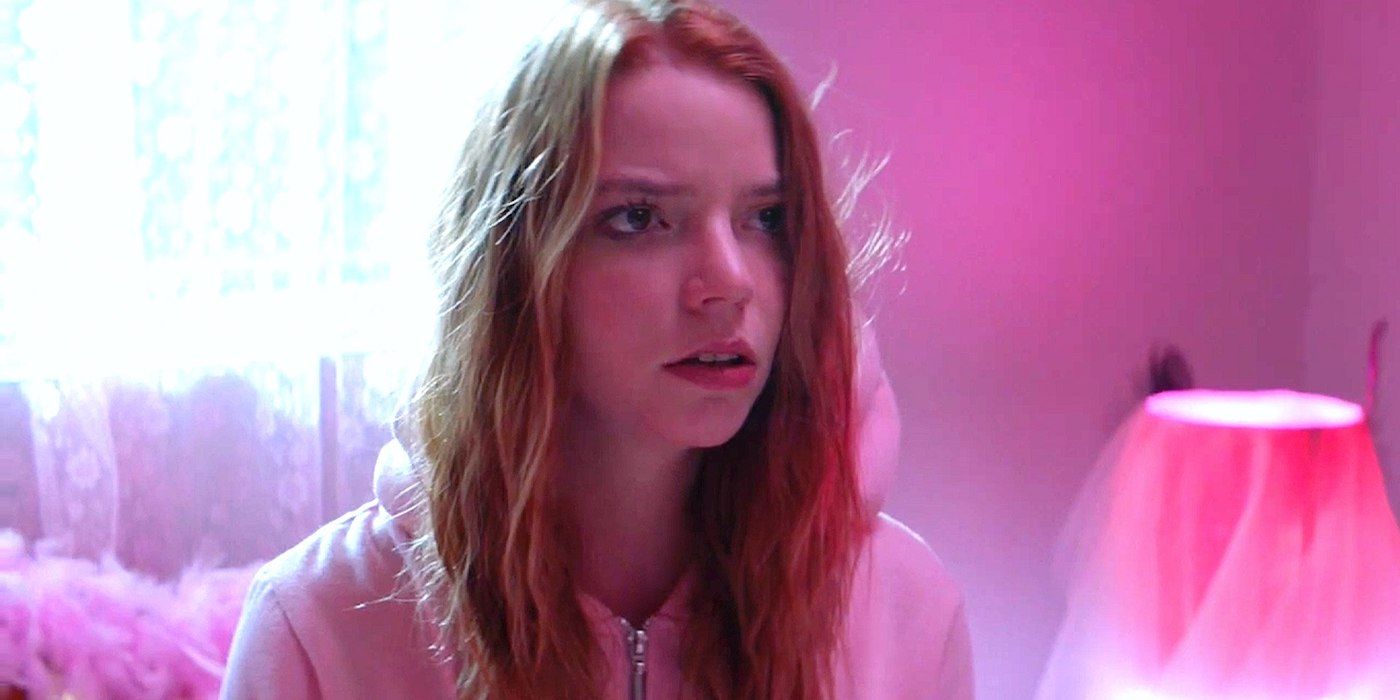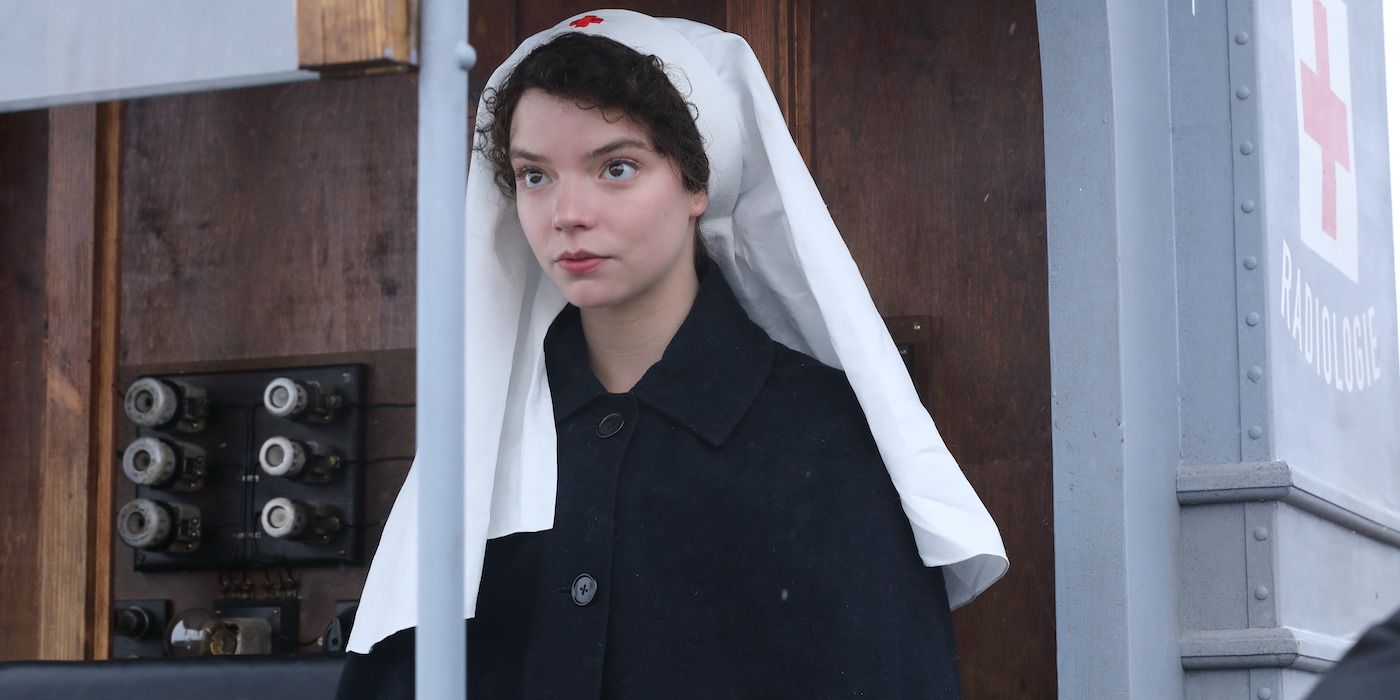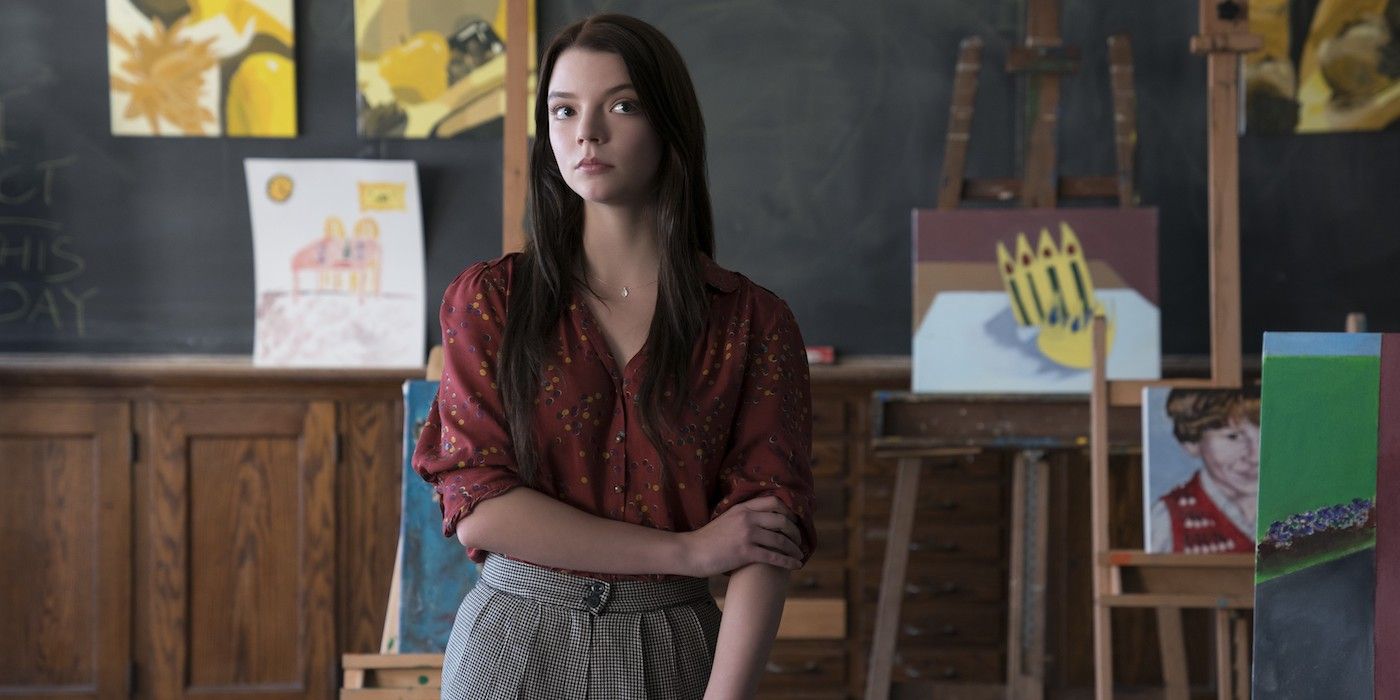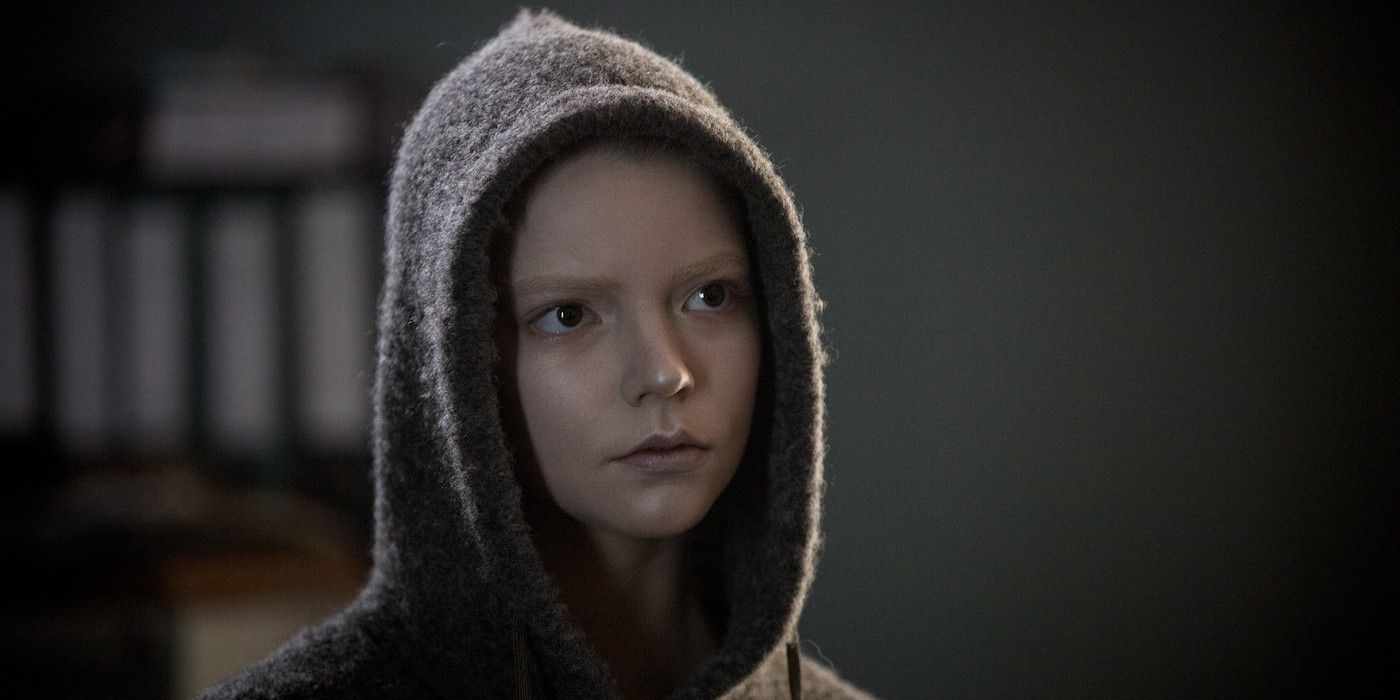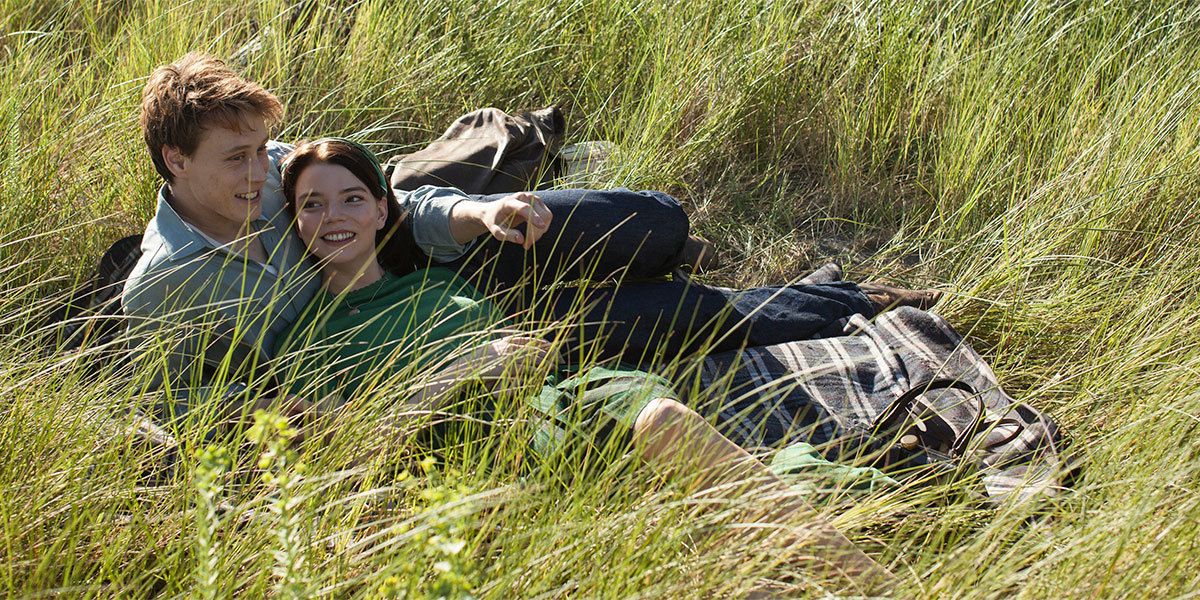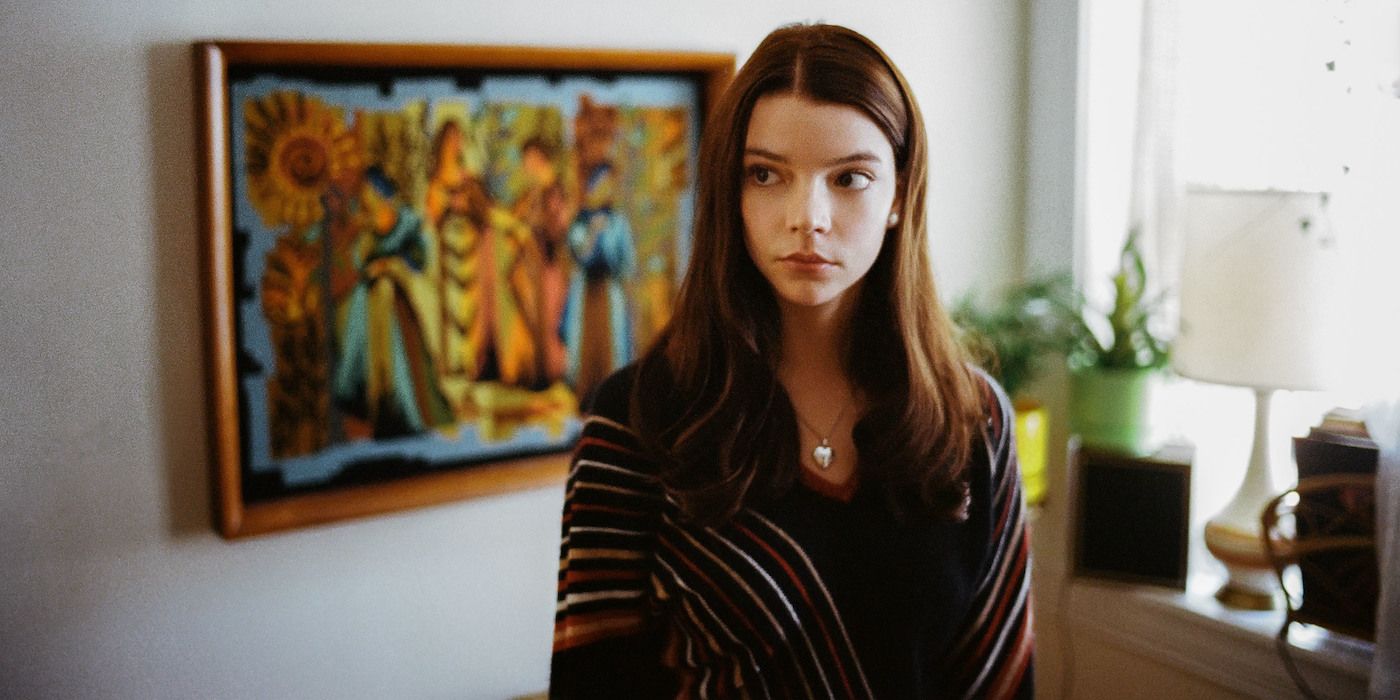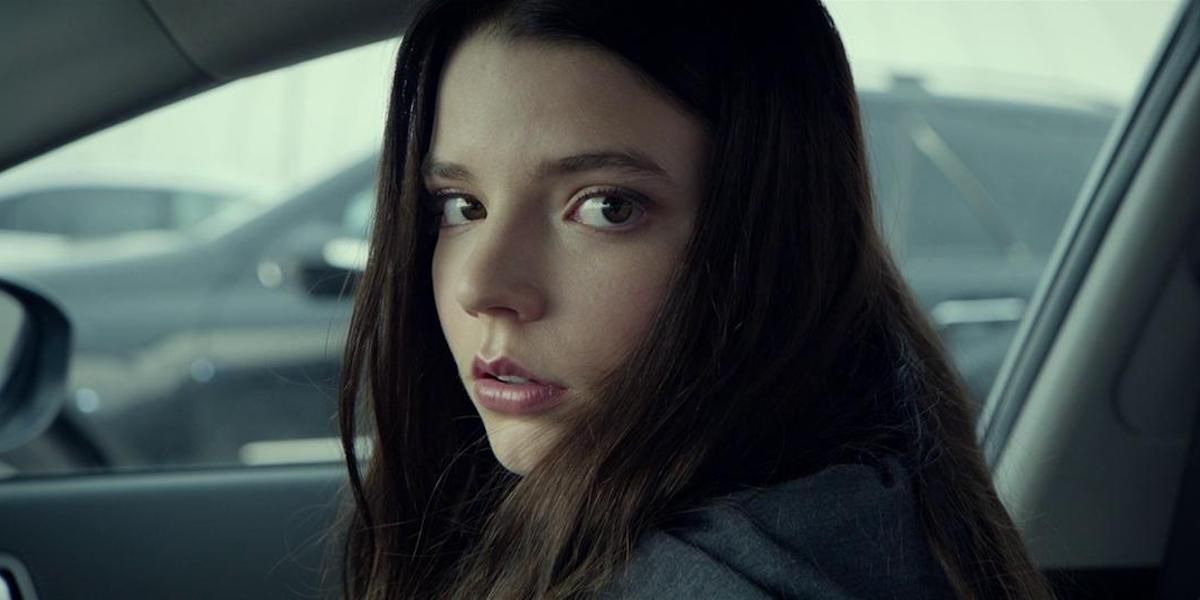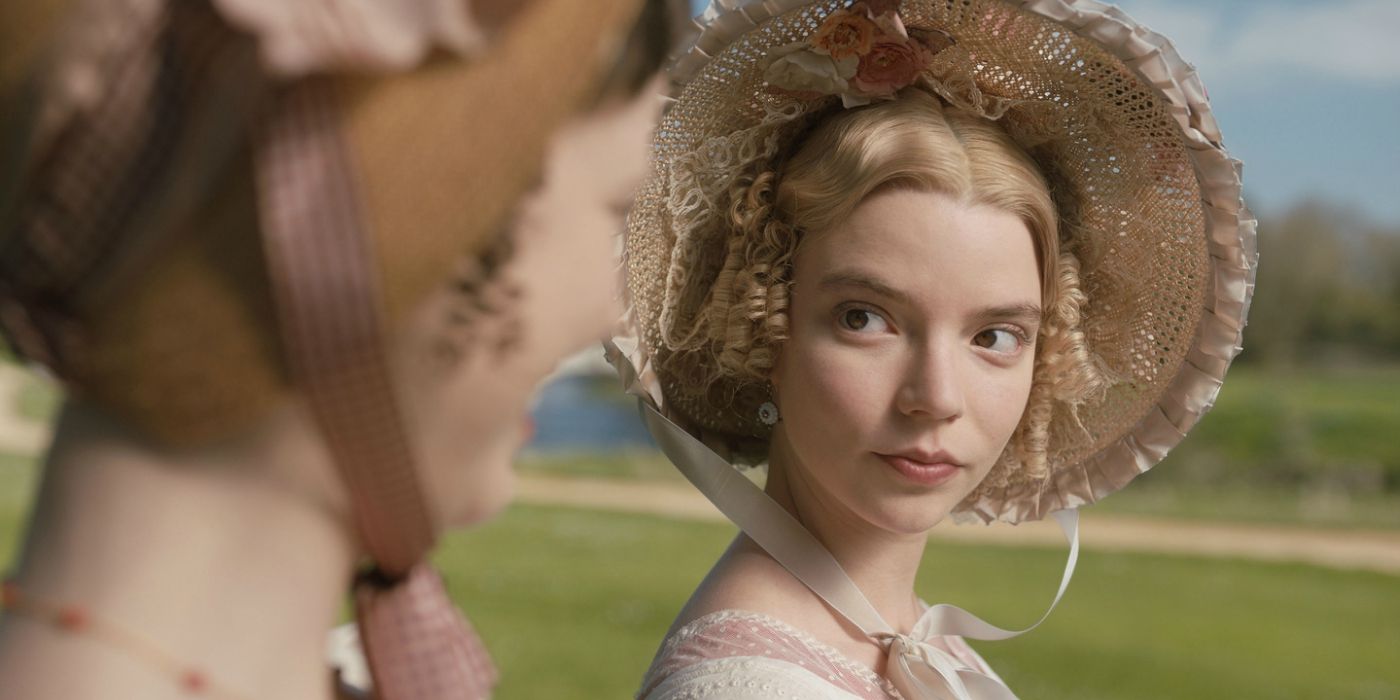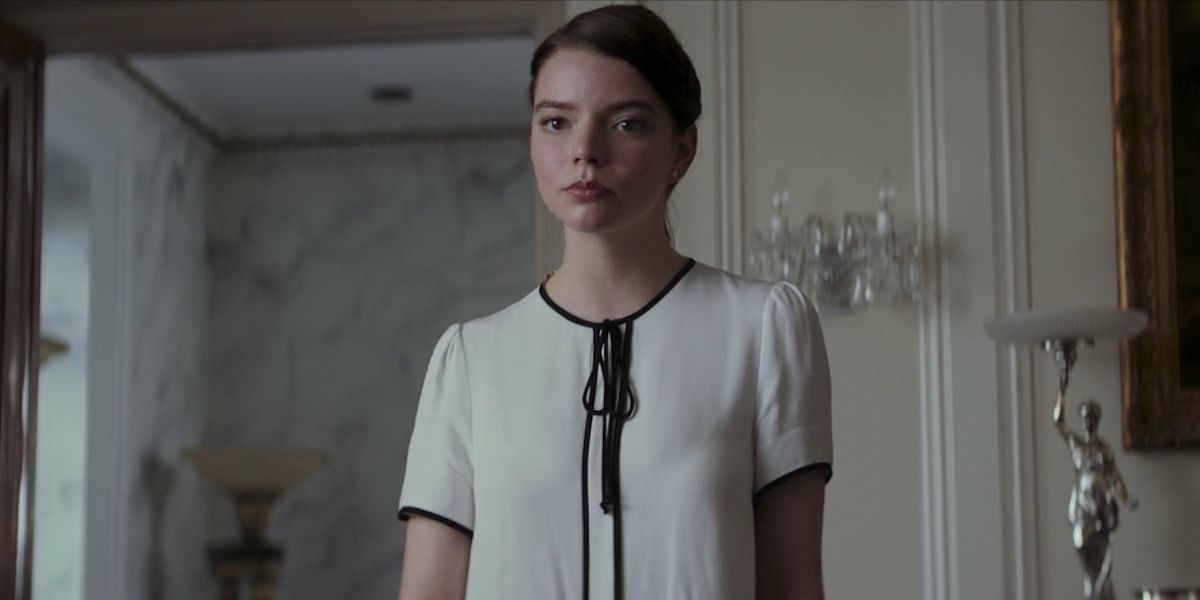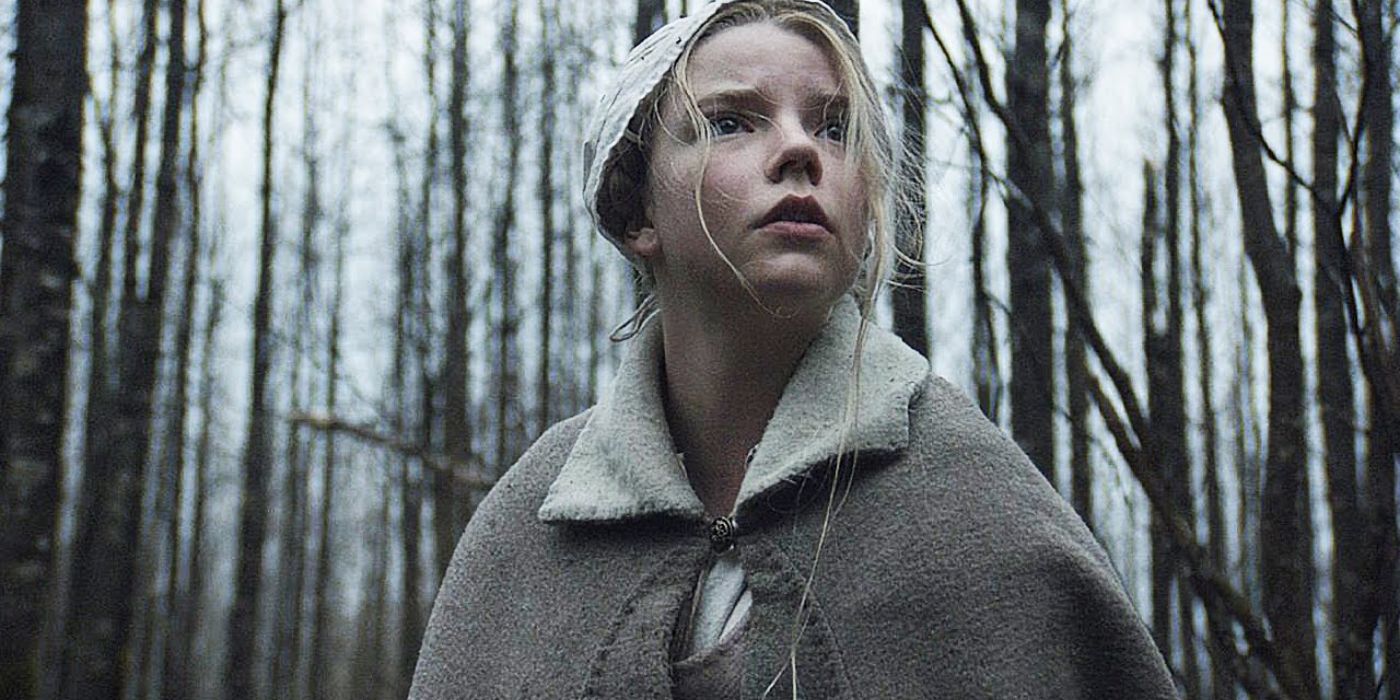In less than a decade, the career of Anya Taylor-Joy has quickly shot to the stratosphere of acclaim and proven her to be one of the most sought-after performers to cast in a film. She has shown she can have a dynamic screen presence that can carry a film, even in ones that may not be as fully up to task as she is. In just a short period of time, she has taken on an impressive number of different roles that show she has an impressive amount of range across a variety of genres. Be it where she began in horror with Robert Eggers’ The Witch or more recent films like the period romance Emma., she has always carried herself with a confidence and control that is impossible to look away from, even in some of the films where you may feel like you want to. No matter the film, she commands the screen.
With Taylor-Joy starring in the new Edgar Wright-directed movie Last Night in Soho this October, and a recently announced role in the upcoming The Northman that reunites her with Eggers, it is worth going back through her film career up until this point. There is a lot of outstanding craft to parse through, even as there are some misses that we might rather forget. Still, it’s all worth diving into in order to get a full picture of the trajectory of how Taylor-Joy has grown into many new and exciting roles that stick with you. Here are Anya Taylor-Joy's movies ranked from worst to best.
Playmobil: The Movie
Do you remember the fact that an entire feature-length film about Playmobils came out in 2019? Do you remember how it starred Taylor-Joy as Marla, a girl who is accidentally transported with her brother to a Playmobil world where they find themselves trapped? No? Then you are not alone. The fact that this movie even exists is much more interesting than anything that takes place within it. It is a children’s film that clearly was hoping to follow in the footsteps of the far superior Lego Movie; it just came out nearly five years too late and lacked any of the charm of what it was clearly ripping off. It is something that you can put on to distract children, they would just have to be of the age where they are entertained simply by bright colors. This all may sound a bit harsh, but it's impossible to evaluate this mess of a cash grab any other way.
The New Mutants
The release of The New Mutants went on for years. With delay after delay, concerns began to arise about whether the film was even worth seeing. Upon its release, the answer we got was a decisive “no.” The story the film attempted to tell was about a group of young mutants held in some sort of mysterious institution where they weren’t allowed to leave; a constrained premise that it ends up doing next to nothing with. Amidst the group is Taylor-Joy as Illyana Rasputin, a secondary antagonist of sorts who frequently bullied the film’s Indigenous protagonist Dani Moonstar (Blu Hunt), who is Cheyenne. This is one of the film’s biggest problems as the litany of racist taunts begins to really go overboard. It all serves as a lazy way to create conflict where there was none in the story. It subsequently gets dropped from the film, making it feel cheap and unnecessary to the overall scope of the narrative.
To make it all worse, Taylor-Joy attempts to deliver all these lines in something resembling a Russian accent. Incredibly inconsistent, it was a strange character choice that only proves to be a distraction. Taylor-Joy isn’t the sole offender as many of the other characters also struggle with respective accents, so it is hard to cast the blame solely at her feet. However, the result is still bad especially when the rest of the film isn’t good on its own. There is a meandering plot and half-hearted attempts at scares as the facility seems haunted that all just builds to a mess of a conclusion. It was a film that concluded the X-Men franchise on a lackluster note where we only wish we could forget it.
Here Are the Young Men
A film that doesn’t do any favors to its compelling cast, Here Are the Young Men is one of the more strange parts of Taylor-Joy’s filmography. Based on the novel of the same name by Rob Doyle, it is a film that attempts to say something about the uncertainty that comes from having to enter into the real world of adulthood. Set in Dublin, it follows recent high school graduate Dean-Charles Chapman as Matthew and Taylor-Joy as his girlfriend Jen as they navigate the uncertainty of growing up. What it ends up becoming is a very muddled film that traces the impact a violent accident has on the young men of the title. It’s unfortunate that the film becomes more juvenile and uncertain than the characters within it. It seems to think it is much slicker than it ends up being, creating surreal and often frightening dream sequences that both play out on television screens as well as in the minds of its characters. Much of these sequences are the result of heavy drug use, making it hard to trust what you are seeing.
It soon becomes clear that some of these dreams aren’t dreams and in fact real events from memory that reveal the dangerous side of these young men; in particular, Finn Cole's Kearney begins to descend into a dark place and threatens to drag the rest of the characters down with him. Taylor-Joy gets lost in the shuffle in most of the film and regrettably is relegated to being the love interest without much development beyond that. It all ends up feeling tragically trite, following a pattern you’ve seen laid out plenty of times before about how things can spiral out of control (especially in the superior Trainspotting). It doesn’t help that the film shoots itself in the foot by creating a narrative structure where the end is shown at the beginning, undercutting much of the narrative tension. But hey, at least the accents feel more authentic and remain consistent throughout.
Radioactive
This mixed bag of a film is the most strict biopic Taylor-Joy has performed in. She shows up as Irène, the daughter of acclaimed scientist Marie Sklodowska-Curie (Rosamund Pike). In one of a few brief scenes, she talks to her mother about the dangers of warfare and how soldiers are being given substandard care even as they are risking their lives. In a film that is dragged down by the formula of the biopic, Taylor-Joy’s passion in these scenes changes the course of the film and injects it with life by giving her mother something to believe in. It takes an understated yet powerful performance to make such an impact in such a brief amount of time, and this is a prime example of that. Taylor-Joy is resolute in a harsh world, standing up to the system that chews people up and spits them out. Later, when Irène has a conversation with her mother while driving through the destruction of the war, the two capture the complex feelings of trying to reconnect when the world is in chaos. It is a simple yet effective scene carried by the two performers.
It’s just a shame that the rest of the film is not up to the same standard as the performers who give it their all. Its intentions are good, though the story is far too wrapped up in the conventions that doom most biopics. As most other films of the genre do, it decides to show nearly every single event of its subject’s life, and ends up spreading itself far too thin. It never gives scenes time to breathe or sink in, instead opting to cast such a wide net over its subject matter that nuance ends up slipping through the gaps. There are some interesting visual moments and shifts in the narrative that break up some of the Spark Notes-esque storytelling, though it isn’t enough to instill the story with anything memorable. It ends up dooming itself to convention.
Glass
Another of the films that Taylor-Joy has only a handful of scenes in, she reprises her role from Split (more on that later) as Casey. She was the former victim of kidnapping who managed to escape, and now is left to confront the multiple personalities of the man who kidnapped her (who is now himself held in captivity). James McAvoy plays what is essentially several characters all within the same body, a detail that plays into the aspect of the films actually being about superheroes. In addition to being a sequel to Split, it also is a sequel to Unbreakable. It is about as all over the place and strangely structured as it sounds.
Casey ends up being rather important in an ending action sequence where all the various threads come to a head and the truth is released into the world. The way all the threads are wrapped up never completely works and proved particularly divisive for those who saw it when it first came out. As a defender of director M. Night Shyamalan, there is admiration to be given for how all his films go for big swings. Even when he misses — and Glass ultimately ends up being one of those more significant misses — there is something interesting operating underneath it all. No one quite makes films like him, and even as her role is small, Taylor-Joy does work well within the film.
Morgan
Morgan is the film that boasts the most comprehensive physical transformation from Taylor-Joy. She looks inhumanly pale as she plays a bioengineered child, the titular Morgan, that developed far faster than is common. Even at only months old, she is walking and talking. However, she soon begins to turn violent and desires to fight back against those that raised her to now be imprisoned. That means Kate Mara’s Lee Weathers must come in to sort things back out. However, soon everything tips into chaos, and the control the scientists thought they had over Morgan ends up completely falling apart. It isn’t the most groundbreaking of stories, often feeling predictable and plotted out, though it is a solid enough piece of action-infused science fiction work with some interesting direction by Luke Scott, son of acclaimed science fiction director Ridley Scott who executive produced the film. Taylor-Joy gives a committed performance defined by silence with sudden bursts of violence.
Unfortunately, by the time the ending revelations come about, it does leave a regrettably empty feeling. There was potential for a film that was broader in both scope and ambition, though that never materializes. Much of this may be due to the fact that the budget was just around $8 million, meaning concessions had to be made. This can be seen as having influenced the film’s lack of different settings as it remains locked into what is essentially one location for the entire runtime. However, sometimes necessity can be the true mother of invention and you can do more with less. Morgan never reaches those heights and leaves a fleeting impression with a conclusion that just peters out when it could have been oh so much more.
Marrowbone
This one is painful to end up not connecting with as movies like these are usually right up my alley. Marrowbone is a mysterious, often subtle horror film that works really hard to build up a frightening atmosphere. It follows George MacKay’s Jack as the older brother of several young siblings whom he is trying to protect from a mysterious dark force inside the home they now reside. Taylor-Joy plays Allie, a neighbor who gets to know the family and forms a relationship with Jack as the film goes on. She ends up being the one who sees the situation most clearly as it becomes increasingly obvious that whatever is happening in the house is not as the family is seeing it. The closest reference point would be to a film like The Others, though Marrowbone just isn’t quite as well put together. Any more details would reveal too much, though suffice to say much of what the film hinges on is a few key revelations that challenge and upend everything occurring.
Unfortunately, it still is tough to highly rank when much of the film is not all that engaging when getting to that ending. Whereas previous horror films have something to stand on beyond a key subversion, especially in regards to how it is all crafted, Marrowbone does not. Even as the information given toward the end helps clean up some of what didn’t connect or make sense, it can’t fix what just isn’t all that sturdy of a story. There are too many bits and pieces that don’t work, even in retrospect with the new information that we are given in the final scenes. Taylor-Joy and the rest of the cast really give it their all despite this, pushing the story into more emotionally resonant places beyond where one could ever hope they get to. It just still falls short of other, more comprehensive films that have told a similar story, and told it better.
Barry
Another film with a single name as this title, though it could not be more different than the prior film. Barry refers to Barack Obama, and this is a biopic of sorts about the first Black president of the United States. The young Obama was played by the relative newcomer at the time, Devon Terrell, as Obama struggles to find a direction for his life in his early college years. It is at college that he meets Taylor-Joy’s Charlotte, a classmate in his political science class that soon becomes a romantic interest. Their relationship is doomed to failure as we know who he ends up marrying in his future. That instills their relationship with an inevitability that is tragic yet engaging. The fact that they are different people coming from different backgrounds is not ignored; rather, it is made front and center within the story, digging into how they both look at the world based on their own experiences, giving it much more substance.
When things begin to fall apart, not because of anything either character did intentionally, it creates a delicate feeling of melancholy. Taylor-Joy and Terrell complement each other well, playing off each other when the scene calls for it. You really begin to care about them and feel sadness at the certainty that this isn’t going to work out no matter what they do. Barry bucked the trend of a typical biopic and instead opted to be more of a slice of life drama that delved deeper into the mindset of the characters at that time. Obama is not a president yet; he wasn't even a politician at that time. He just is a college kid trying to make a relationship work with someone he cares for but is not meant to be with for a variety of different reasons. The dynamic is helped by solid performances, even as the story wraps up a little too cleanly and abruptly.
Split
Now back to Split, the horror film that mostly works when you don’t have to think about the less cohesive future it is leading towards (Glass). This film features much more of Taylor-Joy as the aforementioned Casey, whose character remains one of the most praiseworthy aspects. There certainly is the terrifying premise of being taken into a place when no one can ever find you that serves as a good initial hook. However, what elevates the story beyond just an abduction tale is how Taylor-Joy instills her character with a surprising amount of gravitas. She doesn’t give the most flashy performance, though her subtle glances and quiet moments speak the loudest. There is a profound connection the film builds with her character that makes her the one that holds it all together. Without her, the film wouldn’t nearly have the same impact.
This impact is felt most clearly in the end, at least before the final twist arrives. A revelation about her own background and the bond she forms with McAvoy’s character is unexpectedly profound, even poetic. There are a lot of worthwhile criticisms to be had about how the film uses and misrepresents the realities of dissociative identity disorder, though the conclusion smooths over some of these flaws (they don’t entirely fade away, by any means, though they do become a bit more forgivable when viewed in the context of what Split says about them). The terrifying nature of the situation unfolding and how it shifts into something wholly unexpected is to the film’s benefit, even if it doesn’t entirely maintain that goodwill in the future directions it goes.
Emma.
An adaptation of Jane Austen’s classic novel, this time with an all-important period at the end to distinguish itself from all the other adaptations. Emma. is a film that has increasingly grown on me since I first saw it. Most centrally, this is due to Taylor-Joy’s performance that created a different Emma Woodhouse than had ever been seen before. In this 2020 adaptation, the crueler and calculating aspects of the character are dialed up. Rather than just being unknowingly and unintentionally hurtful, there is a more destructive aspect to Taylor-Joy’s portrayal. She doesn’t always know the full impact of her words, but when she cuts to people’s insecurities the impact is felt anyway. The look in the eyes of those who bear the brunt of her ambivalence to anyone’s feelings but her own is painful to see, though engaging nonetheless. Taylor-Joy creates a much more complicated Emma, giving complexity to an old character.
Autumn de Wilde’s direction is also crucial to Taylor-Joy’s performance. There is one scene in particular where Emma says an extremely callous comment that crosses a line, even for her. De Wilde lets the moment linger, getting very quiet as the camera hangs on close-ups of those who are appalled into near silence at the statement. What offers the film balance is the outstanding Johnny Flynn as Mr. Knightley, who offers pushback on Emma’s treatment of others and becomes a far more dynamic character. Even if there are moments where it feels like not much is happening, it all is forgiven in the moments where the underlying tension comes to the surface.
Thoroughbreds
A film that only is at number two because number one is so outstanding, Thoroughbreds is a delicate balancing act that is a masterclass in navigating tone. Taylor-Joy as Lily and Olivia Cooke as Amanda are opposites of each other in some ways, though more alike than the two initially realize. It follows the friends as they attempt to reconnect and develop a plan to murder Lily's abusive stepfather who is controlling her life. It is a rash idea that soon begins to bury deep in the two friend’s minds. They agree to set the plan in motion, though the film constantly plays with your expectations about how that will happen. There is an extended role by the late, great Anton Yelchin who they try to bring into their plan, only complicating it further. At many points, the entire narrative is upended when things go wrong or they encounter unexpected difficulties. It is harrowing yet oddly heartfelt and humorous in one of the darkest films in Taylor-Joy’s career.
With all that darkness in mind, it is the bond between the two friends that remains utterly enthralling. Amanda is cold, though not uncaring. It all stems from the fact that she can’t experience emotions or feel in the same way that everyone else can. Seeing that dynamic play out with Cooke and Taylor-Joy is upsetting; however, that sadness is something that can’t be looked away from, and instead draws you deeper into their world. By the time it all comes crashing down, you feel pain for and with the characters. You wish the world could have been a different one for them while knowing it likely was never going to be that way. The result is a film that forever etches itself in your brain, especially as it all comes together in the final moments of sadness and uneasy catharsis. It doesn’t offer an easy answer in its end, though its world had no easy answers to give. The world is a cruel place and a cruel conclusion was the only one that made sense.
The Witch
The most meticulously crafted and masterful horror film of the last decade, The Witch is a terrifying yet totally enchanting work that was also Taylor-Joy’s first leading performance in a film; it is therefore fitting that this piece evaluating her career ends here. The story is of Taylor-Joy’s Thomasin going out into the woods in 1630s New England to live with her Puritan family after being banished by a settlement. Pain and misery begin to befall the family, with Thomasin right at the center of it. The entire world Taylor-Joy inhabits is ethereal in a way that it feels beyond our own, while also being deeply tied to the paranoia of reality. She is part of a dark fairytale come to life right before our eyes.
The rising tension the film ratchets up is inescapable and deafening, dragging you deeper into the darkness that is consuming this family. There is a profound feeling that they are doomed and that their fate is sealed with no turning back. It is a tragedy, though one that is deeply beautiful to take in. Every single expertly captured visual, be it of Taylor-Joy walking blood-soaked through the remains of the devastated home or the final visual of a coven floating into the sky, is full of dark wonder. The use of sound, especially in the haunting conversation about whether one would like to live deliciously, only accentuates this. The film doesn’t set a single foot wrong and refuses to allow you to forget it as it creeps into the darkest recesses of your psyche. Each subsequent viewing has only deepened the dread that it smuggled into your very soul. It is Taylor-Joy’s best work and the most frightening film of recent memory.

